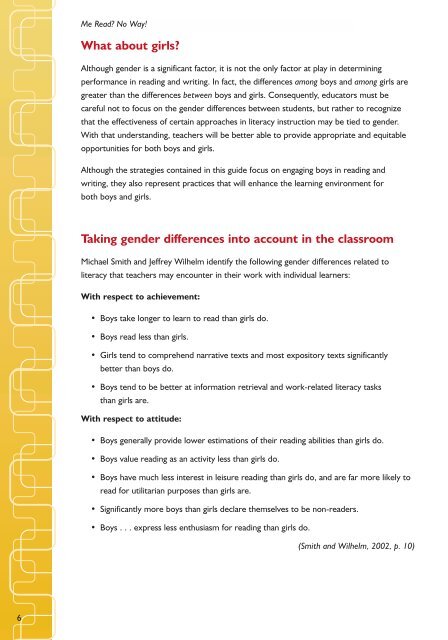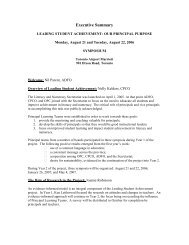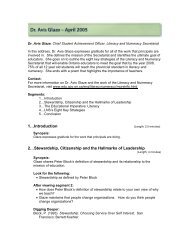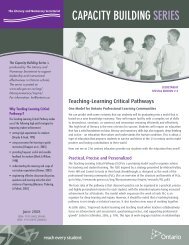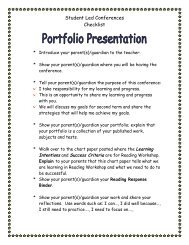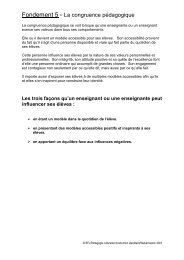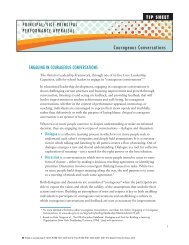Me Read? No, Way! A pratical guide to improving boys' literacy skills
Me Read? No, Way! A pratical guide to improving boys' literacy skills
Me Read? No, Way! A pratical guide to improving boys' literacy skills
- No tags were found...
You also want an ePaper? Increase the reach of your titles
YUMPU automatically turns print PDFs into web optimized ePapers that Google loves.
<strong>Me</strong> <strong>Read</strong>? <strong>No</strong> <strong>Way</strong>!What about girls?Although gender is a significant fac<strong>to</strong>r, it is not the only fac<strong>to</strong>r at play in determiningperformance in reading and writing. In fact, the differences among boys and among girls aregreater than the differences between boys and girls. Consequently, educa<strong>to</strong>rs must becareful not <strong>to</strong> focus on the gender differences between students, but rather <strong>to</strong> recognizethat the effectiveness of certain approaches in <strong>literacy</strong> instruction may be tied <strong>to</strong> gender.With that understanding, teachers will be better able <strong>to</strong> provide appropriate and equitableopportunities for both boys and girls.Although the strategies contained in this <strong>guide</strong> focus on engaging boys in reading andwriting, they also represent practices that will enhance the learning environment forboth boys and girls.Taking gender differences in<strong>to</strong> account in the classroomMichael Smith and Jeffrey Wilhelm identify the following gender differences related <strong>to</strong><strong>literacy</strong> that teachers may encounter in their work with individual learners:With respect <strong>to</strong> achievement:• Boys take longer <strong>to</strong> learn <strong>to</strong> read than girls do.• Boys read less than girls.• Girls tend <strong>to</strong> comprehend narrative texts and most exposi<strong>to</strong>ry texts significantlybetter than boys do.• Boys tend <strong>to</strong> be better at information retrieval and work-related <strong>literacy</strong> tasksthan girls are.With respect <strong>to</strong> attitude:• Boys generally provide lower estimations of their reading abilities than girls do.• Boys value reading as an activity less than girls do.• Boys have much less interest in leisure reading than girls do, and are far more likely <strong>to</strong>read for utilitarian purposes than girls are.• Significantly more boys than girls declare themselves <strong>to</strong> be non-readers.•Boys . . . express less enthusiasm for reading than girls do.(Smith and Wilhelm, 2002, p. 10)6


